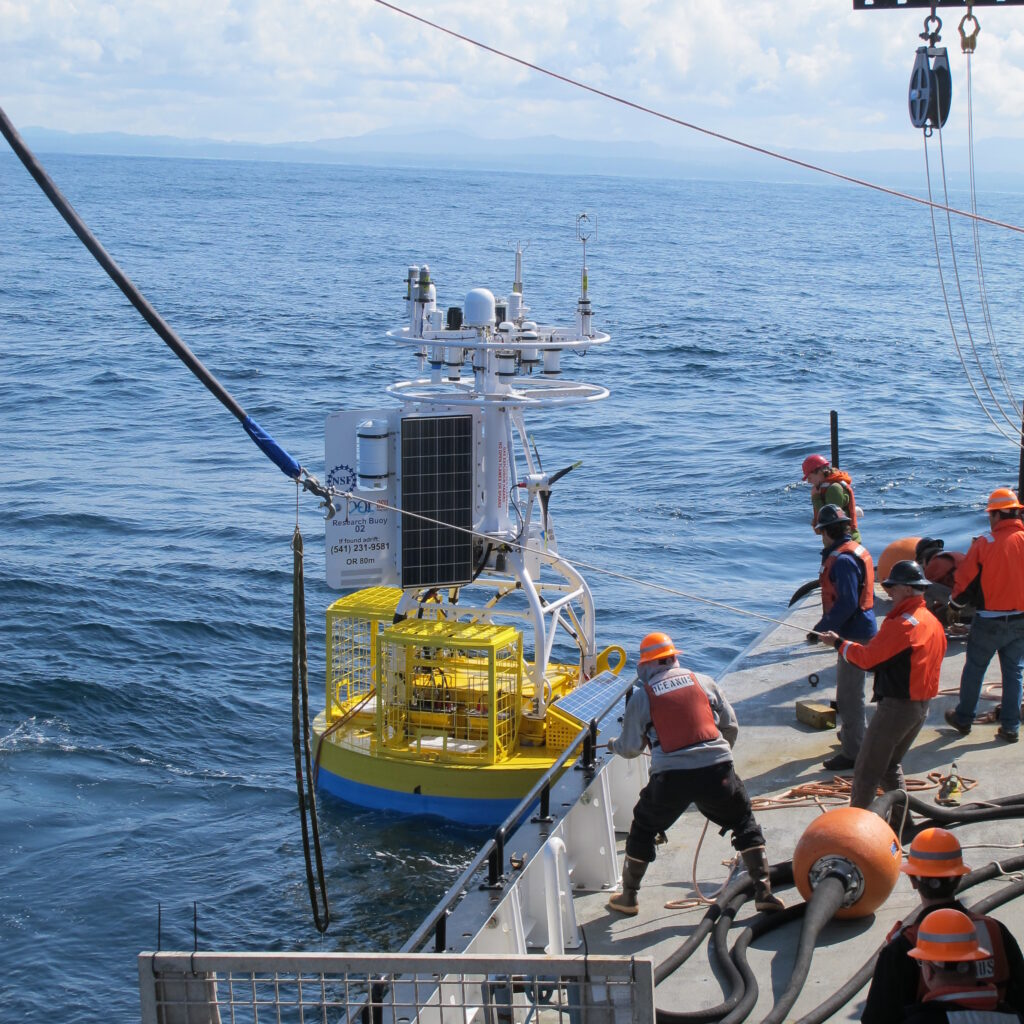In the Marine Energy program section of the Water Power Technologies Office 2022–2023 Accomplishments Report, a summary is provided of collaborative efforts between Sandia National Laboratories and Woods Hole Oceanographic Institution to develop a wave energy converter (WEC) that can support the NSF OOI Coastal Pioneer Array. Additional project partners include Evergreen Innovations, Monterey Bay Aquarium Research Institute, East Carolina University, Johns Hopkins University, the National Renewable Energy Laboratory, and the NSF Ocean Observatories Initiative (NSF OOI). These partners bring expertise in robotics, hydrodynamics, dynamics and controls, marine operations, and wave energy to deliver a wave energy generation system for the NSF Coastal Pioneer Array.
The Coastal Surfacing Mooring (CSM) system currently receives power from solar, wind, and battery systems to power multiple sensors along the mooring line and buoy. These typically power about 70% of the energy needed. The remaining power demand to avoid “brown-outs” could come from additional designs. WEC is investigating this with three possible options.
Many WEC concepts were considered the team determined the design must include:
- Generate 10–100 watts of power.
- Avoid catastrophic failures that could compromise the system’s mission to obtain scientific measurements.
- Enter safe mode during tumultuous activity (such as deployment, recovery, and extreme weather events) to prevent damage to the system.
- Not affect scientific measurements.
- Minimize changes to operational requirements, such as deployment, recovery, and maintenance of the mooring system.
The design of three prototypes were carefully considered. The next steps include selection, development, assembly, testing and deployment for at-sea tests.
For the full Water Power Technologies Office 2022–2023 Accomplishments Report please see the many articles here.

